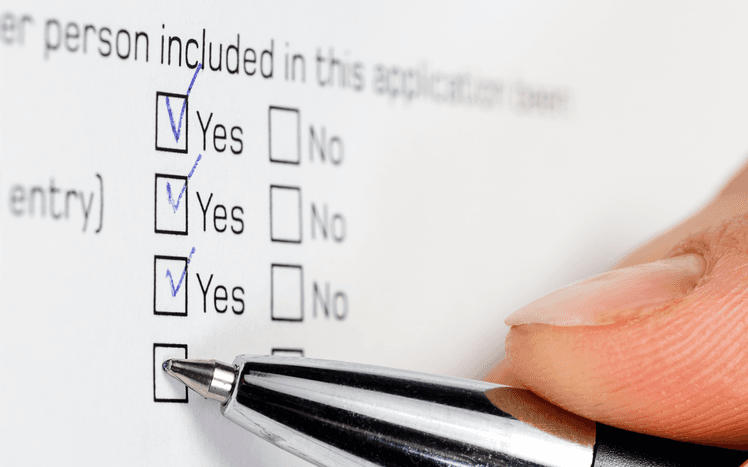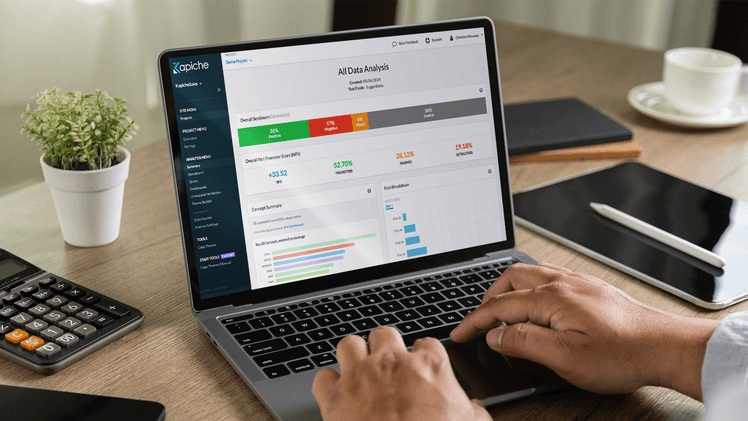In the world of survey design, knowing how to create a great survey experience can make or break your survey findings.
The worst-case scenario is that your questions themselves skew the responses you get back, leading to biased survey results. With survey response rates continuing to plummet, no insights team can afford to send out poorly constructed surveys.
In this article, we’ll explore the most common types of survey bias, and how to avoid them. By the end of this piece, you’ll have the tools to refine your surveys and ensure they deliver the most accurate and useful data possible.
Let’s dive into how you can steer clear of these pitfalls.
Table of Contents
5 Types of Survey Bias to Avoid
What is Survey Bias?
Survey bias refers to any error introduced into your survey results due to how the survey is designed. Constructing a survey without being aware of these biases is like setting up a game with rules that sabotage your ability to play. Recognizing and minimizing bias in your survey research methodology is crucial to ensure accurate and representative feedback.
Bias can be hard to spot after the fact. Your survey results might seem accurate, but hidden bias can skew the results. When crafting your insights or CX strategy, this can be the difference between arriving at a meaningful understanding of your customers and relying on a series of inaccurate guesses.

5 Types of Survey Bias to Avoid
Survey bias can sneak into your research in many ways, skewing results and leading to inaccurate insights.
Recognizing these biases is the first step in ensuring your surveys are reliable and actionable.
Let’s explore five common types of survey bias you need to watch out for.
1. Response Bias
Response bias, including social desirability bias, occurs when the answers given by respondents are not truthful or are skewed in a particular direction. This often happens when respondents feel pressured to answer in a socially desirable way, or when they don’t fully understand the question.
Example
Imagine a survey asking respondents about their alcohol consumption habits. If the survey is conducted in a setting where participants feel that admitting to high consumption might be judged, they might underreport their true habits. This is an example of social desirability bias – respondents answer in a way they believe will be viewed positively by others, leading to inaccurate data, especially on sensitive topics like substance use.
How to avoid it
To reduce response bias, ensure your survey questions are clear, neutral, and free from leading language. Anonymity can also help respondents feel more comfortable providing honest answers.
2. Sampling Bias
Sampling bias occurs when certain members of the population are systematically more likely to be selected for the survey than others. This can lead to results that are not representative of the entire population.
Understanding survey takers' motivations and behavior is crucial to minimize sampling bias.
Example
If you’re surveying customer satisfaction but only include responses from your most engaged users, you might miss out on valuable insights from less active customers who could have different experiences.
How to avoid it
Use random sampling methods to give every member of the population an equal chance of being selected. Ensure your sample accurately reflects the diversity of your target audience.
3. Non-Response Bias
Non-response bias happens when certain groups of people do not respond to the survey, and their lack of response affects the results. This can happen if certain demographics are less likely to participate or if the survey method excludes certain groups.
Respondents may drop out of the survey altogether due to discomfort with certain questions, leading to non-response bias.
Example
A web survey may unintentionally exclude older adults who are less comfortable with technology, leading to a skewed understanding of customer experiences across age groups.
How to avoid it
Maximize response rates by using multiple contact methods and follow-ups. Consider incentivizing participation and making the survey as accessible as possible.
4. Acquiescence Bias
Acquiescence bias is the tendency of some respondents to agree with statements or answer positively, regardless of the content, which can significantly affect the quality of survey answers. This can skew results towards more favourable or agreeable responses.
Example
If a survey includes statements like "I am satisfied with the product" and respondents are inclined to agree without much thought, this can lead to inflated satisfaction scores.
How to avoid it
Use balanced question formats with both positive and negative statements to gauge true attitudes. Employ techniques like reverse coding to identify and mitigate acquiescence bias.
5. Order Bias
Order bias occurs when the sequence in which questions or answer options are presented affects the responses. Recency bias, a type of order bias, can occur when respondents favor the last answer option presented due to its recentness making it more memorable. This can lead to skewed data if earlier questions influence how subsequent questions are answered.
Example
In a survey asking about customer service, if you first ask about product features and then about service quality, respondents might be more likely to rate service positively because of their focus on the product.
How to avoid it
Randomize the order of questions and answer options to minimize order bias. This helps ensure that responses are not unduly influenced by the sequence of questions.

How to Prevent Survey Bias
Avoiding survey bias requires a thoughtful approach to survey design and implementation. Here are a few tips to help you reduce bias and improve the accuracy of your survey results:
1. Design Neutral Questions
Craft your questions to be as neutral and unbiased as possible. Avoid leading questions that suggest a particular answer or have emotionally charged language.
Neutral questions help ensure that respondents’ answers are based on their true opinions, not on the influence of the question’s wording.
2. Use Random Sampling
Implement random sampling techniques to ensure every member of your target audience has an equal chance of participating. This minimizes sampling bias and helps achieve a representative sample, giving all segments of your audience a fair chance to be included.
3. Ensure Anonymity
Guarantee respondent anonymity to encourage honest and accurate answers. When respondents feel their responses are confidential, they’re more likely to provide truthful feedback. Anonymity helps mitigate response bias, as participants are less likely to give socially desirable answers when they know their identity is protected.
4. Pilot Test Your Survey
Conduct a pilot test of your survey with a small, representative sample before rolling it out broadly. This helps identify potential biases and issues in question clarity.
Pilot testing allows you to catch and correct biases or ambiguities before they affect your main data collection, leading to more accurate results.
Kapiche’s tools can analyze pilot survey responses to identify patterns and potential biases, offering actionable recommendations to refine your survey.

5. Avoid Survey Fatigue
Keep your survey concise and focused to prevent respondent fatigue. Long or complex surveys can lead to rushed or inaccurate answers as participants lose interest.
Shorter surveys with clear, relevant questions are more likely to maintain respondent engagement and yield more accurate data.
Kapiche’s platform provides insights into survey completion rates and response quality, helping you identify and address issues related to survey fatigue.
Conclusion
When it comes to conducting surveys and gathering actionable insights, avoiding bias is crucial for obtaining accurate and valuable data. At Kapiche, we understand the challenges associated with survey design and analysis. Our platform is designed to help you navigate these complexities with ease.
Want to see how Kapiche can transform your survey analysis and improve your customer insights? Click below to watch an on-demand demo of Kapiche and discover how our platform can help you achieve more reliable and actionable results.







